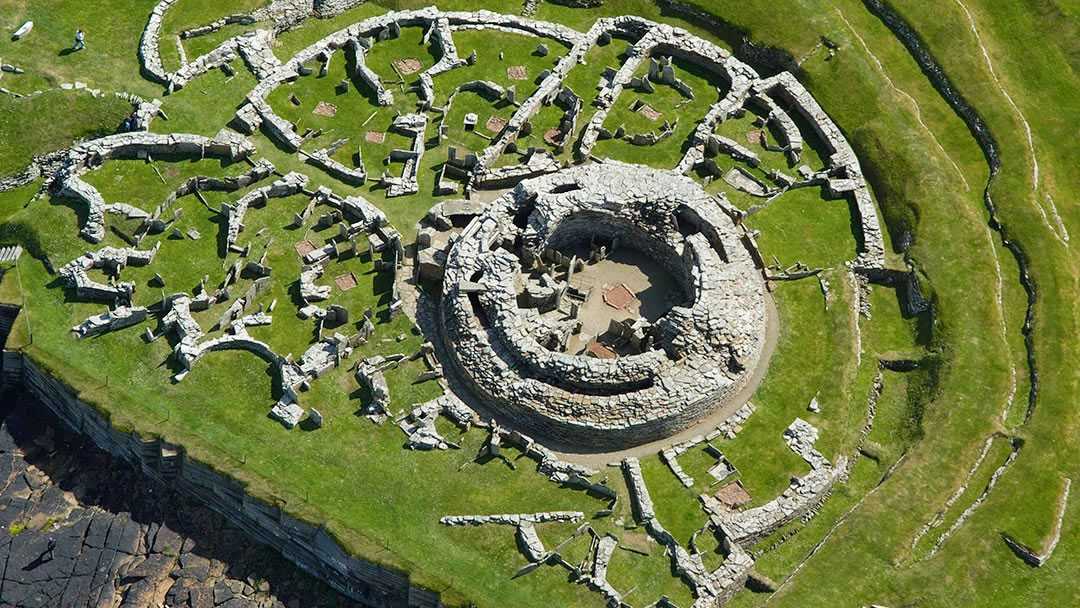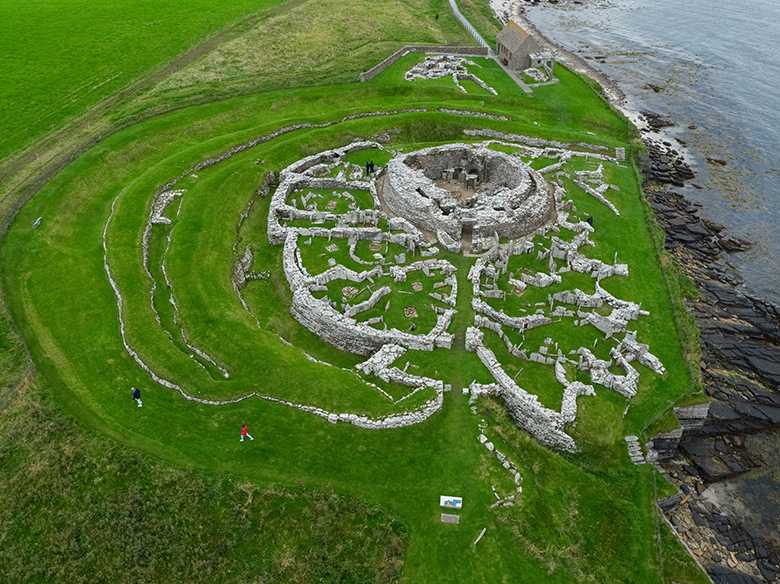Located on the northern coast of Mainland Orkney, Scotland, the Broch of Gurness is a well-preserved Iron Age settlement that offers a fascinating glimpse into the lives of the ancient community that occupied it. This archaeological treasure, with its complex of stone buildings and defensive structures, is a testament to the architectural prowess of a civilization that thrived over 2000 years ago.
Get your dose of History via Email

Historical Background
The Broch of Gurness dates back to the Iron Age, specifically between 500 and 200 BC. It is thought to have been built in what is now eastern and northern Scotland during the Late British Iron Age and Early Medieval periods. The broch was occupied for several centuries, with evidence of use and modification until the end of the Roman era around 400 AD. The settlement at the broch continued into the 5th century AD, the period known as Pictish times. Until about the 8th century, the site was all but abandoned and fell into ruin until its rediscovery in the 1920s.
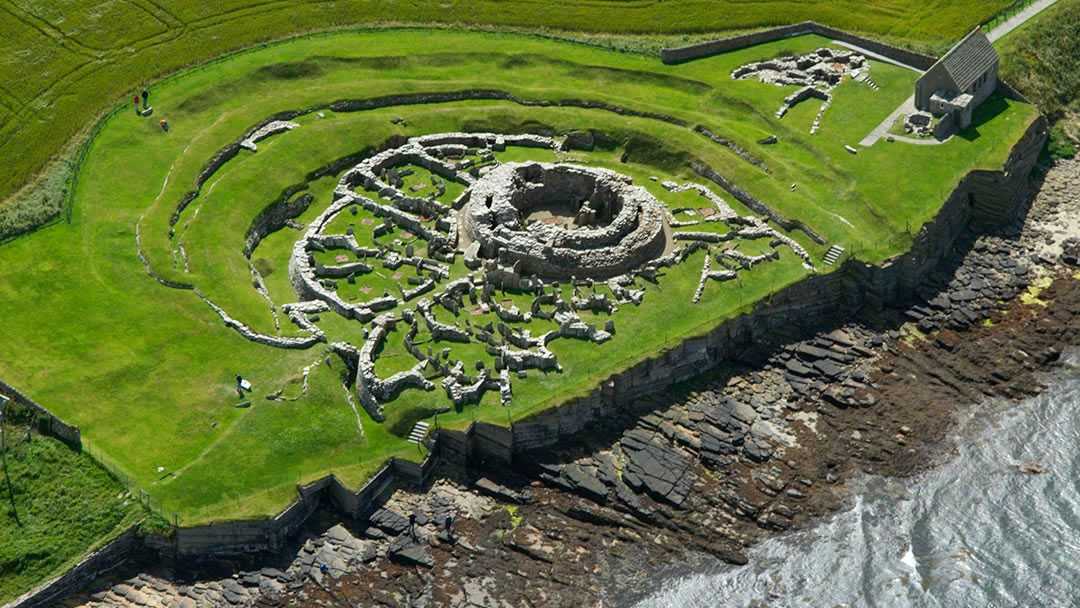
Architectural Highlights
The Broch of Gurness is a prime example of a broch, a type of complex, round, stone tower house found only in Scotland. The central tower, now mostly collapsed, would have stood up to 30 feet high and had an internal diameter of about 30 feet. The walls, which are up to 10 feet thick, contain a series of chambers and galleries. Surrounding the broch is a complex of additional stone buildings, including houses and workshops, enclosed by a defensive ditch and outer wall.
The construction of the broch demonstrates a high level of skill and organization. The stones used in the construction were likely sourced locally, as Orkney has an abundance of suitable building material. The design of the broch, with its central tower and surrounding structures, suggests a community-based lifestyle with a focus on defense.
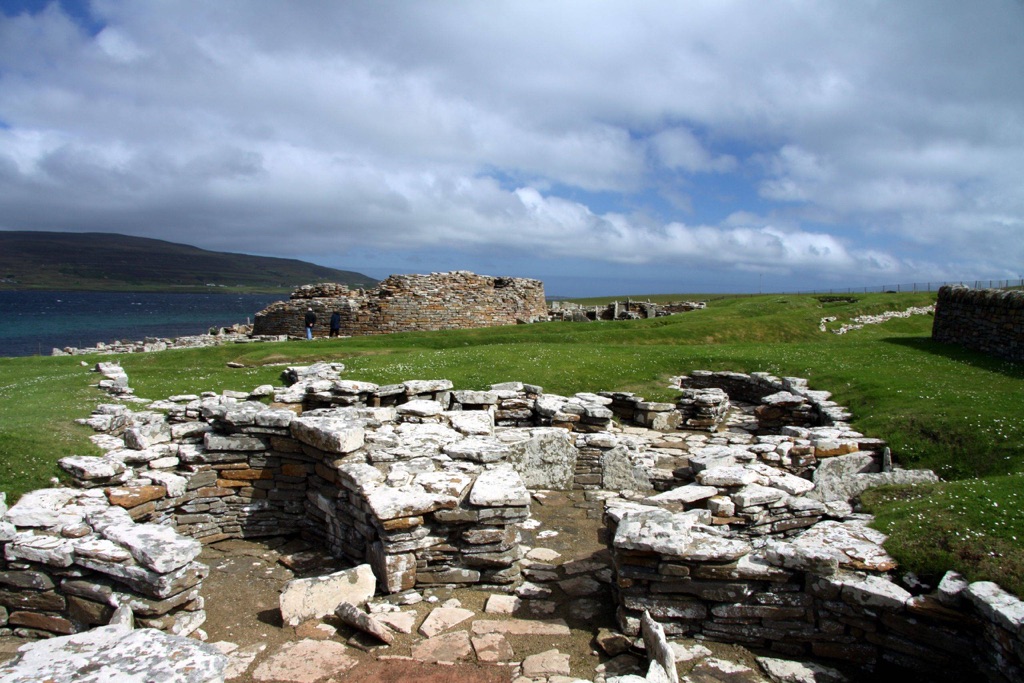
Theories and Interpretations
The exact purpose of brochs like the one at Gurness is still a matter of debate among historians and archaeologists. Some believe they were primarily defensive structures, while others suggest they were prestigious residences or even a form of communal living. The presence of workshops and other domestic buildings at Gurness supports the latter theories.
The dating of the Broch of Gurness is based on typological analysis of the artifacts found at the site, as well as radiocarbon dating of organic materials. The site has yielded a wealth of artifacts, including pottery, bone and stone tools, and Roman trade goods, providing valuable insights into the life and trade connections of the people of that time.
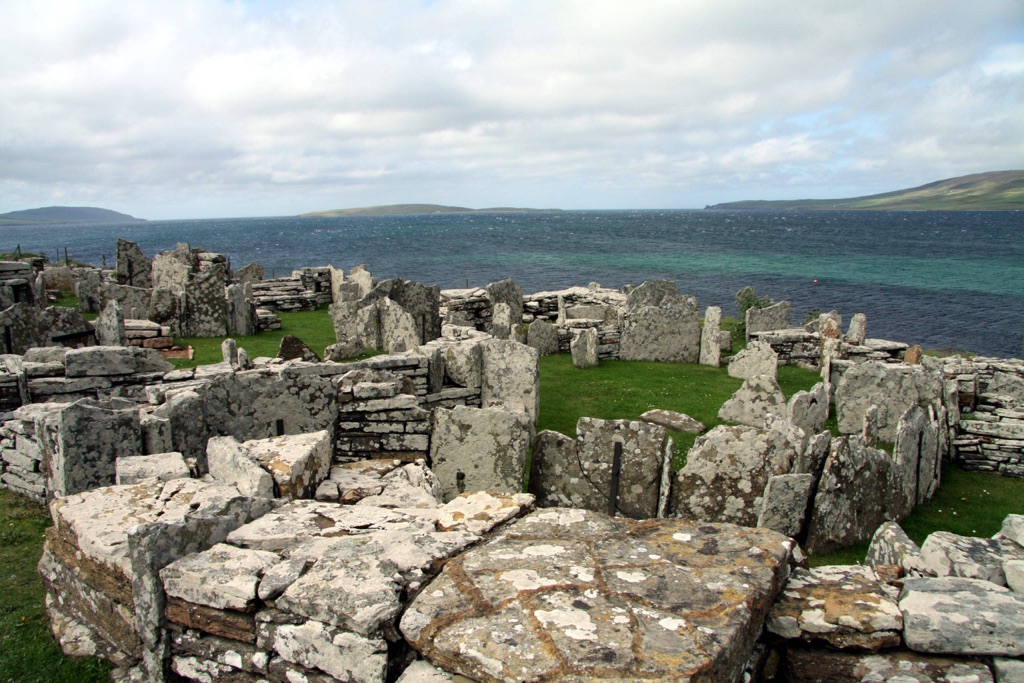
Good to know/Additional Information
Today, the Broch of Gurness is managed by Historic Environment Scotland and is open to the public. Visitors can explore the ruins, walk through the ancient village, and even enter the broch itself. The site also features a visitor center with exhibits on the Picts and the Iron Age in Scotland.
Despite its age and exposure to the harsh Orkney weather, the Broch of Gurness remains one of the best-preserved brochs in Scotland. Its impressive state of preservation and the wealth of information it has provided make it a must-visit for anyone interested in the ancient history of Scotland.
